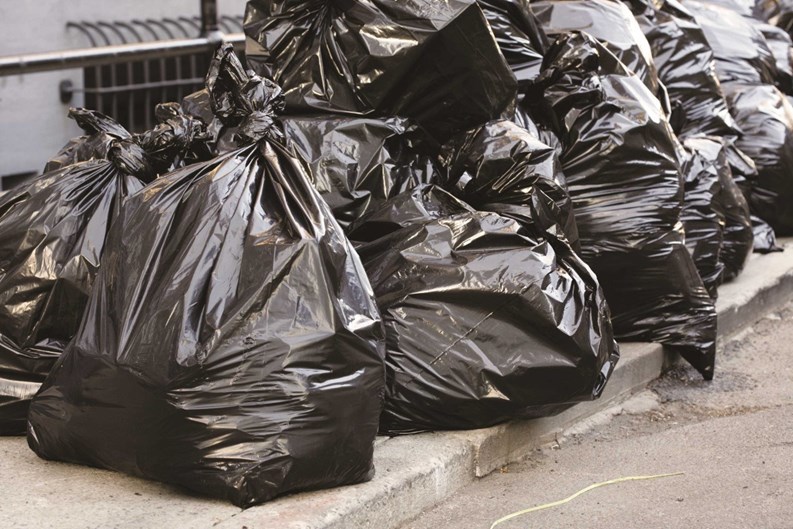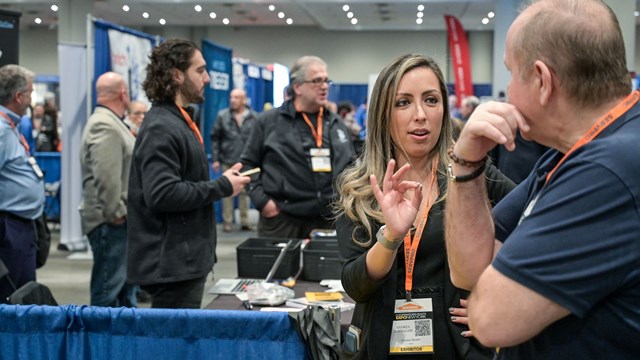In days gone by, when you opened something up, you simply threw away the packaging. You ate your dinner and threw away the scraps, and you tossed your ratty old sweatshirt, t-shirt or jeans in the dumpster when they had more holes in them than a chunk of Swiss cheese.
A Throw-Away Society
It’s not surprising then, that as a nation, Americans generate more waste than any other nation in the world with 4.6 pounds of municipal solid waste per person per day—fifty-five percent of which is contributed as residential garbage. It is estimated, for example, that Americans use 2,500,000 plastic bottles every hour, with the majority of them being thrown away.
We've come a long way from there in many regards. Today that journey of your old t-shirt and jeans or your Friday dinner leftovers entering the waste stream from garbage to landfill can take a very different route. That shirt or jeans can now be donated to a textile recycling center; the food scraps can now be composted; and every package you open is broken down and recyclable pieces are put in their appropriate containers.
In nearly every community, a variety of city and statewide initiatives exist to reduce the annual amount of garbage going into the waste stream. Recycling programs are in place for paper/cardboard and textiles, bottles and cans and electronic waste or e-waste. Most recently, composting programs have gained momentum in residential communities.
John Schert, the director of the Hinkley Center for Solid and Hazardous Waste Management in Gainesville—a statewide research center, funded by the Florida Department of Environmental Protection (FDEP) and hosted at the University of Florida—and the self-styled “chief garbologist” of the Sunshine State, says that “Composting is the means of taking anything that will decompose and burying it into soil to go back to the earth. There have been no changes to the FDEP compost rule, 62-709, that would affect requirements for disinfection of compost. Some larger landfills are adding bio-solids to their Class I landfill disposal operations, which promotes the anaerobic digestion of the waste into carbon dioxide and methane.”
In fact, home composting of yard waste and select kitchen waste takes materials that could wind up in a landfill and turns them into very useful products for South Florida gardens. Anything plant-based can be composted.
In Miami-Dade, for example, the Miami-Dade County's Public Works and Waste Management Department is hosting several home composting workshops in cooperation with the Miami-Dade County Cooperative Extension. The first ones began on August 8 and continue through October. The next one on Tuesday, October 6 will take place from 10:30 to 11:30 a.m. at the Pinecrest Branch Library, 5835 SW 111 Street in Pinecrest. For more information, call 305-248-3311, ext. 228. Miami-Dade residents who complete the course are eligible to receive a free compost bin.
Seventy-Five Percent Goal
“In 2008,” Schert says, “the Florida legislature enacted House Bill 7135 which established a statewide recycling goal of seventy-five percent, to be achieved by the year 2020. Many counties throughout Florida have implemented various recycling initiatives to divert materials from landfills to be recycled instead.
“Solid waste collection and disposal can be very complicated,” Schert says, understating somewhat its complexity, “especially in South Florida.”
Where there may have been municipal trash collection, over the years, the collection process was mostly privatized, he says, to save taxpayer money. Each county, or sometimes a community within the county, has a contract with a private collection service. These contracts can be complicated in their variety; Broward County, for example, has 20 municipalities and 20 different contracts.
Generally speaking, solid waste—that is, the refuse you throw in the trash—winds up in one of three places: a landfill; a MRF (pronounced “murf”) a materials recycling facility/materials recovery facility; or a waste energy plant.
In 1980, Florida had approximately 500 open dumps, which officials found over the years were dangerous to the environment. Today, there are 694 solid waste facilities in the Sunshine State from transfer stations and landfills to hazardous waste collection centers to MRFs. The state has 95 active Class I, Class II and Class III landfills, the majority of which are county-owned and operated. Out of all the MRF’s in Florida, three of the largest plants are in South Florida (2 in Miami and one in Pembroke Pines).
Florida has gone from having one waste energy plant in 1982 to having 11 plants as of 2011, with more on the way. Waste-to-energy systems generate steam for heat, process or power applications with the added benefit of reducing landfill use and thus, methane emissions. A large portion of the waste is also renewable fuel. Hillsborough County, for example, uses a Resource Recovery Facility that burns approximately 562,000 tons of garbage annually. This combines to generate 293,970,000 kilowatt-hours of energy—or enough to power 26,000 homes.
Waste Management is the largest environmental solutions provider in North America, serving more than 20 million customers in the U.S. and Canada. According to Dawn McCormick, the director of communications and community relations for Waste Management Inc. of Florida in Pompano Beach, there are many ways in which residents in a multifamily setting collect their trash and recyclables. The most common ways are via compactors and trash chutes installed inside buildings and individual homeowner or condo/HOA bin collection.
“When it comes to recycling,” says McCormick, “each individual county decides acceptable items for residential pickups. It really depends on the Material Recovery Facility (MRF) capabilities.” And experts say, despite the 75 percent goal, recycling is not mandatory in Florida.
“Florida has very extensive curbside collection for recyclables,” adds Schert. All recyclables are then taken to the MRF for treatment. The facility does the cleaning, sorting, and processing of glass, paper, aluminum, plastic, and everything else. “A water bottle might be recycled into a bottle for detergent,” Schert says. “It won’t come back as another water bottle.”
Knowing More is Better
From throwing away trash, to recycling and composting, educating the building staff and residents is key, and that education starts at the beginning—knowing where all of that garbage goes. And this means keeping the staff and residents up-to-date on changes in trash, composting and recycling laws. For example, industry experts estimate that U.S. consumers throw away 400 million units of electronic equipment—cell phone and computers, for example—per year.
E-waste is going to require a more concerted effort by residents and municipalities to dispose of items properly in the years ahead and become a huge part of the waste stream, according to McCormick. “Individuals can go online at WM Lamptracker to order the appropriate containers. Multifamily communities can even have an ‘e-recycling’ drive for their residents.” she suggests.
Multifamily properties and their administrators should aim for 50 percent trash collection and 50 percent recycling.
“Property managers should ideally have a separate collection location for their residents’ waste and their residents’ recyclables,” Schert says. “Having a visible bin or compartment for paper, cardboard, plastic containers—such as soda or water bottles, laundry detergent containers—encourages more recycling, which is ideal for the state of Florida’s seventy-five percent recycling goal.”
Florida has a ways to go but its recycling numbers are increasing. According to the FDEP, new data shows an uptick. “New 2013 recycling data released by the Florida Department of Environmental Protection shows Florida's official recycling rate is now 49 percent, up one percent from last year. This represents a substantial increase in the amount of solid waste recycled—from 9.7 million tons in 2012 to 11.8 million tons in 2013.”
“As we get closer to the 2020 deadline for the 75 percent recycling goal, we need all Florida residents to step up recycling efforts,” said Division of Waste Management Director Jorge Caspary. “While we have made modest improvements again this year, it is still critical for the commercial sector to increase its recycling efforts before the goal can be achieved.”
No matter what form trash collection or recycling takes, it’s no secret that there is an intangible benefit.
“We all need to work together to preserve and protect our environment,” McCormick states. “By proper disposal of trash and recycling (plastic/paper/cardboard/metals/glass), we can minimize the impact of waste going into our landfills and recycling to preserve our precious natural resources.”
Lisa Iannucci is a freelance writer and a frequent contributor to The South Florida Cooperator. Managing Editor Debra A. Estock contributed to this article.





Leave a Comment